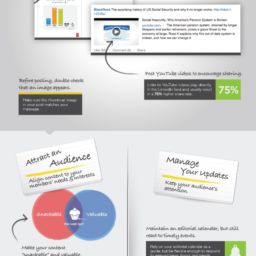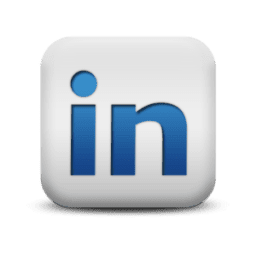
Are you a member of a LinkedIn group? Do you spend time networking in LinkedIn groups? LinkedIn groups are great way to build credibility and make new connections that can ultimately help grow your business.
You can join up to 50 LinkedIn groups. However, it’s difficult to gain traction in 50 groups as well as find the time to participate in that many. I recommend that you go ahead and join up to 50 groups, but select 5-10 groups to spend your time on in order to get the most benefit out of your participation.
With over 1.5 million LinkedIn Groups, it can be difficult to find relevant groups and determine which ones might be the best for you to join. It is also important to find groups that are well-managed. Unfortunately there are many LinkedIn groups that are not well-managed and that makes the experience within these groups less than optimal. Not to worry, I’m going to give you some insights on how to find the quality groups.
Below are 5 tips for maximizing your LinkedIn groups experience:
1) Use LinkedIn Search to Find Relevant Groups to Join
In case you haven’t noticed, LinkedIn search has been significantly enhanced. This includes the ability to search for relevant groups (based on your network) and it also includes the ability to search for discussion topics within open groups!
To start with, search for groups using keywords that would be a natural fit for you based on your geographical location, industry, prospects, alumni, community/charity organizations, hobbies and interests. Try searching LinkedIn Groups with the keywords that actually describe your natural affinities. For example, type in the name of the college you attended to find potential alumni groups that exist on LinkedIn.
You can also take advantage of Boolean search operators for smarter searches on LinkedIn. (I recently discovered this Tip Sheet on Boolean Search from LinkedIn Corporate Solutions). To locate a LinkedIn Group that was in my geographical location and my industry, I searched LinkedIn Groups using the Boolean Search Operator “AND” for the keywords (social media AND Dallas). LinkedIn showed me 25 results of groups based in Dallas AND focused on social media!
Another interesting finding was when I typed the word “hiking” into LinkedIn Group search, I found a group with over 1000 members who share this passion. There is no better way to start relationships than connecting around a common passion or interest!
For each LinkedIn Group that is displayed in search results, you have the option to view members in your network who belong to the group as well as “similar groups”.
You can even reach out to your LinkedIn connections and ask them what they think about the groups that they belong to. This gives you a solid reason to reach out and connect with your network.
LinkedIn group search is extremely powerful for discovering the right groups to join.
2) Review the “Groups You May Like” Suggestions from LinkedIn
The easiest way to navigate to the “Groups You May Like” feature is through your to navigation menu bar under “Groups”. There you will see these options. (The Groups Directory option is the primary search area for LinkedIn Groups)
When you click on the “Groups You May Like” feature, LinkedIn will list suggested groups for you to check out based on your network connections, profile information, skills and expertise, and existing group memberships. (You may also notice some groups (or subgroups) on this list that you already belong to.
3) Evaluate the Quality of a LinkedIn Group
How do you know if the LinkedIn group you are interested in joining is going to be a well run, quality group?
In some cases, you may just have to join the group and spend some time there to make that determination. However, here are a few ways to evaluate the group for quality:
Is this LinkedIn Group a Quality Group?
-Who is the group manager, and are they engaged and visible?
-What are the group rules? (hint: if the group rules don’t exist or they are not well written, chances are the group is not well-managed)
-Do a good majority of the discussions involve questions and dialogue?
-Are there lots and lots of promotional links or an abundance of “self-promotion”?
-Are the top influencers in the group credible?
-Is the group manager among the top influencers?
In a well-managed group, you are going to most likely see a manager who is visible throughout the discussions and a strong set of rules.
The quantity of membership and the activity level of a group aren’t always correlated to whether or not the group a quality group. I’ve seen some very large groups that are very well-managed and some very small groups that aren’t managed at all!
Be sure to evaluate the stats of the LinkedIn group you are interested in as well. There you can learn more about member demographics, activity, how long the group has been around, and more.
4) Consider Joining Corporate Sponsored Groups
There are a number of corporate sponsored groups popping up on LinkedIn. This is where LinkedIn has officially partnered with brands or corporations to help them build robust groups. Within each of these groups, the organization can drive member visits and discussion participation while also controlling the ad display space within the group site.
Examples of these corporate LinkedIn Groups include: Intuit (small business group), Citi (Professional women’s network), Staples (small business network), and Capital One (Business traveler network).
What I love about corporate sponsored groups on LinkedIn is that they are very well-managed. The discussions tend to be in-depth with rich dialogue amongst members. These brands/corporations have a vested interest in making their groups successful, and in every case there are dedicated group managers in place who facilitate the dialogue and keep the groups spam-free.
I have found as a member of several of the groups listed above that the discussion questions submitted weekly (and delivered via email) by these group managers are intriguing and enticing. They make you want to jump right in and give your own insights and opinions!
If you run your own LinkedIn group or you’re thinking about starting one, you could learn some terrific strategies as a member of these corporate sponsored groups.
5) Adhere to LinkedIn Group Participation Best Practices
In order to make LinkedIn Groups serve as authentic forums for discussions and dialogue, we can all do our part to maintain the integrity of the groups we belong to. This will make the LinkedIn Group experience better for everyone.
Additionally LinkedIn is doing its part by helping group managers fight promotional posts. If you are thinking about posting a discussion that contains the words me, my, or I, don’t count on it showing up. Most likely it will end up under the “promotions” tab where it’s highly unlikely that anyone will see it.
In order to successfully build influence in LinkedIn groups, your best bet is to authentically engage in discussions and contribute value-added insights.
Below are some best practices to remember as you find the right groups to join and start engaging with members:
-Don’t just drop into groups and promote your products or services
-Don’t auto-post your blog articles into LinkedIn groups (Instead, provide links to reputable sources of information within the context of discussions that can help members. This can include your blog articles if they truly serve that purpose.)
-Ask questions and provide thoughtful answers
-Contribute to ongoing discussions and new discussions consistently
-Share meaningful, helpful, interesting, and reputable content
-Send invites to connect with mutual group members only after you’ve spent some time participating in the group (Ideally the best time to send the invitation is when you’ve interacted with members in a discussion!)
I hope that these tips will help you make the most of your LinkedIn groups experience. LinkedIn groups provide an amazing opportunity to position yourself as a thought leader and an influencer. If you lead by example with your participation, others will follow.
Source – [SocialMediaToday]






